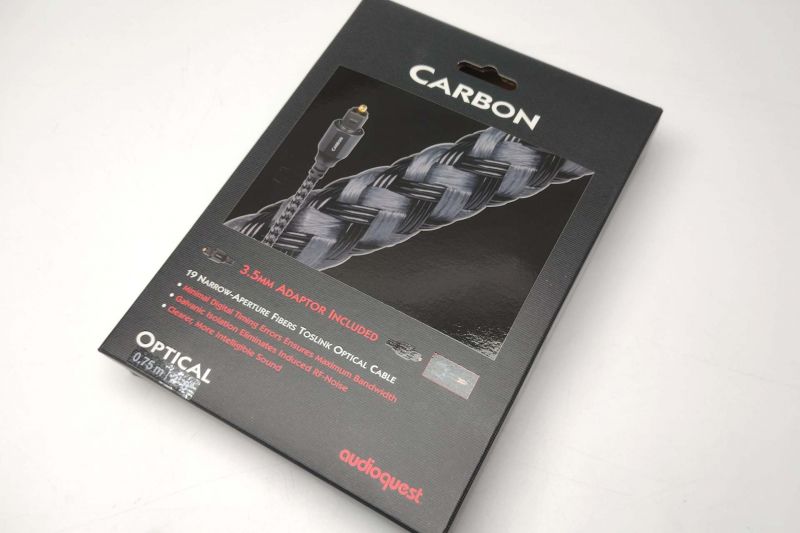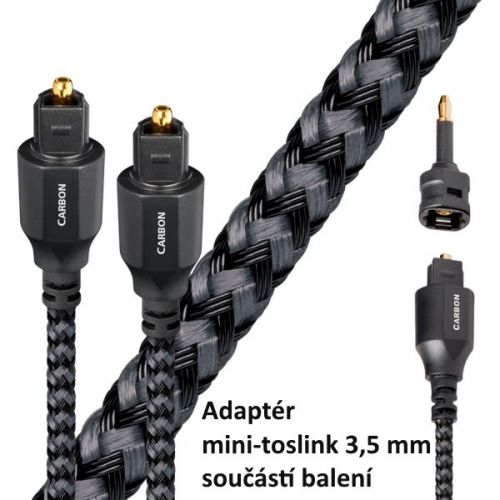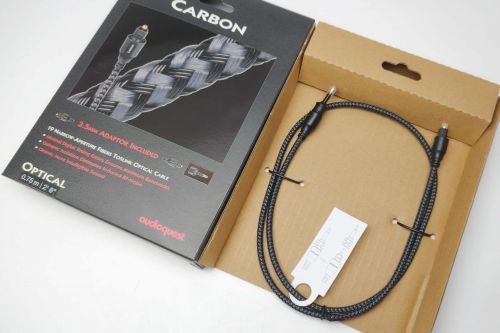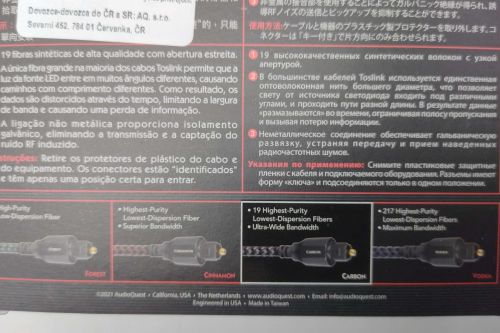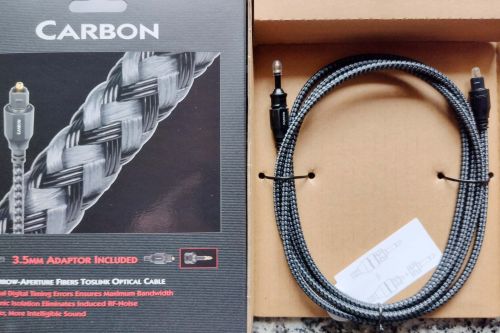You are here Home E-shop E-SHOP Digital cables Optical cables Audioquest Carbon Toslink
Audioquest Carbon Toslink
In stock
Description - Audioquest Carbon Toslink
If you need to know the compatibility of individual cables, their sound characteristics and recommendations for your equipment, download the comprehensive and carefully prepared PDF document: click here
Check out our YouTube channel, where there is a lot of interesting information about cables, news, installations, expert advice on various topics: enter YouTube channel
If you need a specific cable length or type of termination, I recommend using the enquiry form and let me know your requirements. I will be happy to help you with specifying your order and calculating the price of the material: inquiry form here
Audioquest Carbon Toslink
- Premium optical cable with toslink - toslink connectors (+ 3.5mm mini-toslink adapter included)
- Higher fiber clarity with lower light scattering ensures better information transmission and less loss.
- Precision polished optical fiber with excellent clarity and lower dispersion
- 19 synthetic fibers with narrow aperture and minimal digital timing error
Toslink, thanks to HDMI, is not often used as a connection between a DVD player and A/V receiver, but is common in TV sets, subwoofers and all sorts of products. 3.5mm Mini Optical Cable also incorrectly known as Mini-Toslink is everywhere now...from the 3.5mm dual-purpose headphone jack on a Mac laptop to the inputs on the best laptops. For all these reasons, Audioquest has improved and innovated our OptiLink line of truly high performance cables. All models and lengths are now available with both Toslink - Toslink and Toslink - 3.5mm Mini Optical connectors. The question is "how can a fiber optic cable change the sound?" ...the answer is much simpler than with other cables. If the light source were a continuously shining laser shining into a vacuum, the light beam would stay straight and arrive at its destination in the same amount of time. Even if the LED light source were continuous in a Toslink system, the light entering the fiber optic cable would be scattered and affected by imperfections and impurities in the fiber. We can measure this as a loss in amplitude... but amplitude is not the problem, 50% of all true loss does not affect sound quality.
The problem is that scattered light will only pass through the cable after it has taken a longer route, just like a billiard ball bouncing off the edge of a table, causing it to arrive at its destination with a delay. The delayed part of the signal prevents the computer that decodes the signal from decoding the signal correctly, or may even make decoding impossible altogether. This inability to decode manifests itself first at high frequencies (not audio frequencies, so the reduced bandwidth is a measurable consequence of light scattering in the fiber. The bottom line is this: the less scattering in the fiber, the less interference in the final analog audio signal that reaches our ears. There is another fundamental problem in the scattering mechanism of a Toslink system. The fiber is relatively wide, at 1 mm in diameter, and the LED light source is also quite large, letting light into the fiber at many different angles. Even if the filament is absolutely perfect, the signal will still be spread out over time because the light beams entering at different angles have different lengths of travel through the cable and arrive at their destination with different delays.
An almost complete solution to this problem is to use hundreds of much smaller fibers in 1 mm bundles. Because each fiber is limited by the angle at which light can enter it, there is much less difference and much less scattering over time. This narrow entry effect is similar to the effect of a camera being able to take a picture without a lens... a picture can only be taken by letting in light at a very limited range of angles, whereas taking a picture with a lens would make the picture completely impossible. Less light gets through the multi-filament cable, but the light that does enter it exits in a much smaller time span. So we have one problem - scattering of light over time...and two paths towards a better result: less scattering in the fiber (better polymers or preferably silicon) and less scattering when the input angle is affected.




